"In Mount Vernon Seminary, the T. W. Willard Motion Picture Company has made a remarkable Kodachrome publicity picture. No interior was too large for their color work, as is clearly shown by the fine shots of a "prom." Large rooms with groups of girls taken by artificial light were rendered in true colors with striking effect. The film demonstrates quite clearly how successfully color can be used in industrial and publicity filming and that no special limitations are involved. The most attractive titles were double exposed on well chosen bits of school scenery. The film has an air of friendliness and polish that is entirely in keeping with the spirit of the school it portrays. Just enough of the right things are shown to make a favorable impression on prospective patrons of the school." Movie Makers, Dec. 1936, 548.
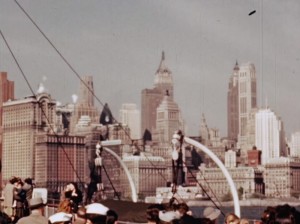
"Most of the residents of New York City know that the world's metropolis is something more than a play place for sensation hunters. But, if one were to judge from many films of New York City, the conclusion would be inevitable that the urban settlement at the mouth of the Hudson River is chiefly devoted to night clubs and parades and is populated largely by those who frequent them. In New York Calling, made for the New York Central System, of which he is supervisor of the Motion Picture Bureau, Frederick G. Beach has presented the New York Central's eastern terminal city as a reasonable and understandable place, where sane people live and to which a man may bring or send his family for a holiday without wondering if they will survive the experience. Made for showing to families, Mr. Beach's excellent Kodachrome footage covers the best of New York City with an apparently effortless leisure, in spite of its brevity. Including many different phases of a great city, the picture has a generous amount of well made closeups. Things that will interest children are strikingly presented. If this reviewer did not already live in New York City, Mr. Beach's movie, with excellent narrative and music, would be the best possible argument for him to change his residence. It certainly will prove to be persuasive in the days when railroads can again urge us to travel for pleasure." Movie Makers, Dec. 1942, 508-509.
"The Other Americans was a winner of a special Judges' Award for the Best Public Service Film in the "C" Classification. It's a long film, 52½ minutes in all, but it is filled with what poverty really is. Ms Julian Krainin and Dewitt Sage of Forest Hills, N. Y. have created a film about the Negroes, the Puerto Ricans, the Indians, the Coal Miners, the Farmers and many others that are poor, poor, poor. The average American will be surprised at how poverty-stricken other Americans are. The film is a mind-opener and well deserves the special award that it received," PSA Journal, Mar. 1970, 43.
"On teaching children about money management." National Archives.
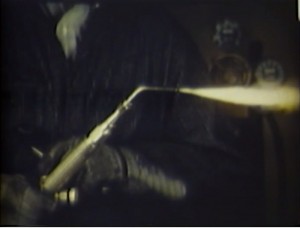
"Good teaching films are not easy to produce, and welding activities are not easy to film. In making this picture, Ray Garner and the Harmon Foundation have solved both problems in a highly satisfactory manner. The procedures are clearly and simply outlined in titles which are combined with unusually fine camera work, to produce a well integrated whole. Done almost entirely in closeups, the actual welding scenes show perfect exposure and, in many instances, very interesting angles. The film was made at Hampton Institute, in Virginia, and a student demonstrates the proper techniques in procedure. The title art work was especially good in this film, and the entire production showed the effects of a well organized plan and a careful procedure." Movie Makers, Dec. 1942, 509.
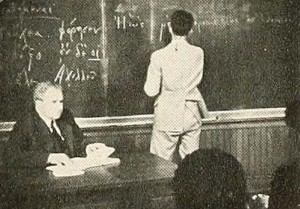
"The title of Pomfret Today, produced by the T. W. Willard Motion Picture Company, gives a clear impression of the subject matter of this recent addition to the Willard tradition of fine school films. Produced for the Pomfret School, in Connecticut, the picture provides a pleasant portrait of a gracious institution carrying on its work amid settings of quiet beauty. Studies, sports, hobbies and recreation — all are recalled here in sequences marked by a wealth of warm color and distinguished technical ability. A directly planned continuity is neatly edited and adequately titled, in a subject designed primarily for alumni screening." Movie Makers, Dec. 1937, 630.
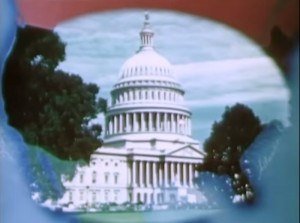
"Bituminous coal is the major actor in The Power Behind the Nation. This sound on film color movie, made by Waldo E. Austin for the Norfolk and Western Railway Company, shows effectively the tremendous part played by soft coal in the development of the nation. The picture is well filmed and thoroughly integrated by an excellent narrative, while lead and end titles are appropriately double exposed on shots of moving trains, which serve to drive home the point that the railroad is the important link between the mine and the consumer. Exceedingly fine sequences of coal mining and well handled shots of the railroad equipment are high points. This film is a fine example of an industrial motion picture produced without the excessive equipment and appropriations sometimes thought to be necessary for such an effort. " Movie Makers, Dec. 1940, 604.
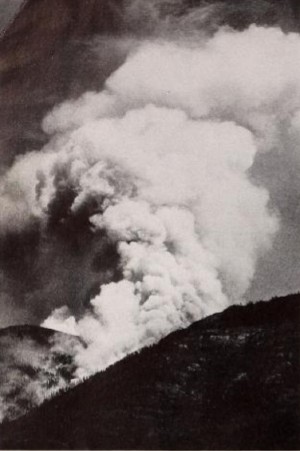
"To publicize fire prevention work of the U.S. Forest Service, R. P. Ewing, A.C.L., New York City, working in cooperation with K. D. Swan of the Service, Missoula, Mont., has, with the assistance of Frank Foltz, completed Red Hell of the Kaniksu, 400 feet, taken in the St. Joe, Kootenai and Kaniksu National Forests." Movie Makers, June 1932, 254.
Total Pages: 8